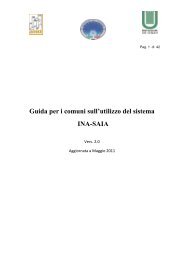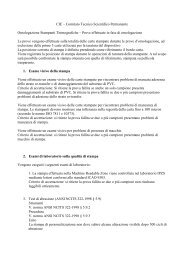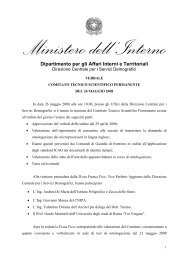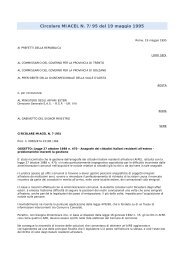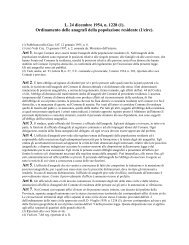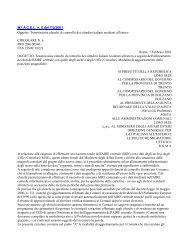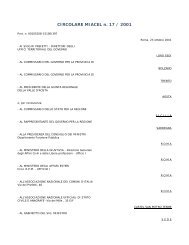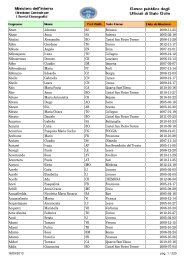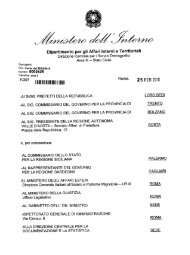C.I.E – Carta di Identità Elettronica Functional Specification Version 2.0
CIE - Functional Specification v 2.0
CIE - Functional Specification v 2.0
- No tags were found...
Create successful ePaper yourself
Turn your PDF publications into a flip-book with our unique Google optimized e-Paper software.
This command computes the <strong>di</strong>gital signature (DS) of the input data.The DS is given in the response data field.To use this command it is necessary to load in memory a current security environment (CSE) byusing a MSE command. The CSE has to refer to a DS component and to an object type:• RSA KPRI SIGNThe input data are the <strong>di</strong>gest of the hashed data.The card performs a PKCS#1 BT1 pad<strong>di</strong>ng on the input data before computing the signature.Security:The access con<strong>di</strong>tion to satisfy is AC_USE of relevant BSO.12.19 Optional commandsMain Digital Signature schemes need files (EF and DF) to be deactivable / activable after thesignature has reached a certain level of authentication within the card.In the next sections two optional ISO standard APDU commands are described as a suggestion forimplementing such requirement.The implementation of these commands is absolutely optional. Cards manufacturers are free tofulfil Digital Signature requirements with proprietary commands.12.19.1 AC bytes extensionBytes 4 and 5 in MF/DF and EF ACs (See Table7 and Table8 for co<strong>di</strong>ng) are used in the followingway:Byte Nr. ACProtected Commands... ... ...4 AC_ DEACTIVATE DEACTIVATE FILE5 AC_ ACTIVATE ACTIVATE FILE... ... ..Table 58: MF/DF and EF AC bytes mo<strong>di</strong>fication12.19.2 DEACTIVATE FILECLA INS P1 P2 P3 Data FieldCIE - <strong>Functional</strong> <strong>Specification</strong> v <strong>2.0</strong> -Page 70/76





